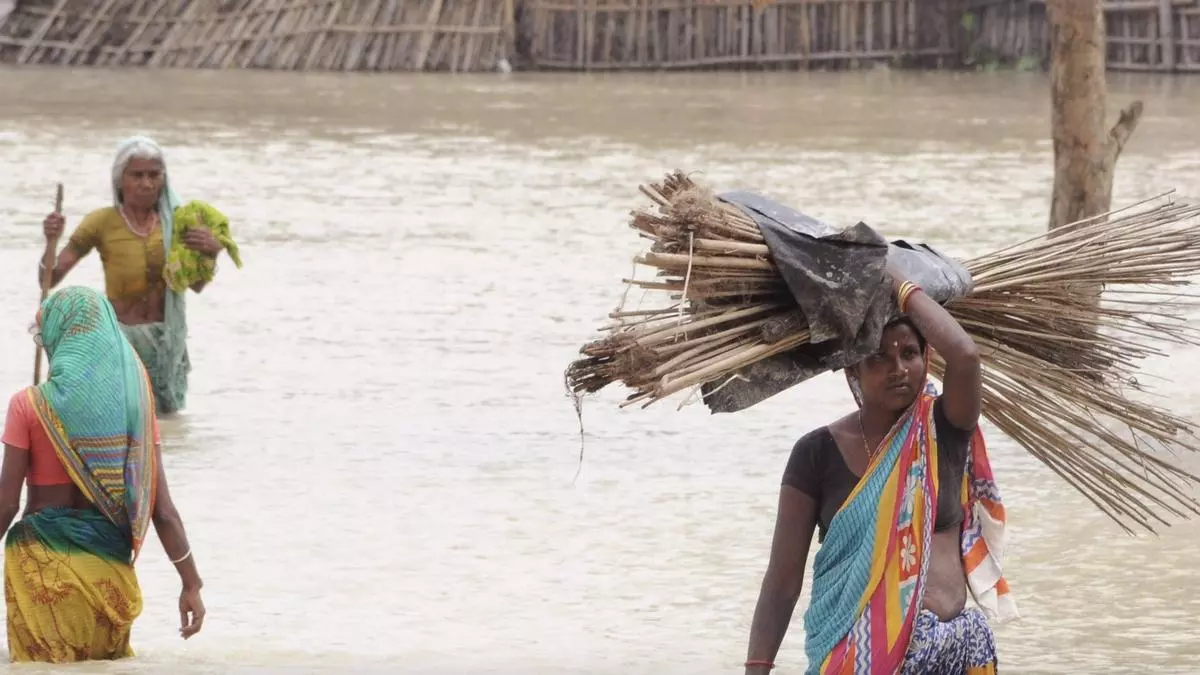Run-up to COP29: Climate induced loss and damage to agri-food systems cries for attention
Small and marginal farmers are key stakeholders agri-food systems increasingly at risk from climate induced loss and damage. While agri-food is gradually integrating into global value chains, farmers in many developing countries remain both producers and primary consumers of the food they grow.
COP 29 being held in November at Baku, Azerbaijan, presents a critical moment to ensure loss and damage funds are directed to breaking poverty trap and safeguarding livelihoods in disaster-prone regions in developing countries, says Sanjay Srivastava, Chief, Disaster Risk Reduction, UN-ESCAP. This is a moral imperative we can no longer afford to ignore, he told businessline.
Risk to agri-food systems
Addressing climate induced loss and damage to agri-food systems is key to protecting the poor and vulnerable. A World Attribution study sees climate change’ fingerprints’ in extreme monsoon rain in South Asia. A UN-ESCAP analysis indicates temperature increases of 1.5°C and 2°C will subject South Asia to highest impact from heavy precipitation. A ‘climate crisis hotspot,’ people here are 15 times more likely to lose lives from climate change impacts.
The month of September, Srivastava recalled, saw a series of devastating floods across Philippines, Myanmar, Lao PDR, Thailand and Vietnam triggered by cyclone Yagi on the back of an intense monsoon. Towards the month-end, Kathmandu in Nepal received a fifth of its average annual rainfall in just 48 hours, setting off unprecedented floods. Agri-food system here has been hit the hardest, deepening vulnerabilities of marginalised communities and exacerbating existing challenges.
Hazard risk spots
Flooding is a persistent problem in Nepal and state of Bihar in neighbouring India, where half a dozen rivers originating from Nepal drain into. The Kosi and Gandak river basins traverse these transboundary areas, and frequently transmit floods from Nepal. Asia-Pacific Disaster Report 2019 identifies these basins as multi-hazard risk hotspots where disaster risks intersect with poverty, inequality and environmental degradation.
Greater commitments to plan, fund, and implement transformative adaptation measures will be essential to build a resilient agri-food system, Srivastava said. Implementing transformative adaptation entails rapid and far-reaching transition across sectors associated with agri-food systems. Initiative of Dr Rajendra Prasad Central Agricultural University on scaling up climate-smart agriculture through mainstreaming climate-smart villages of flood-prone areas of Bihar sets an example.
Digital Agriculture Mission
Diversification is key to a resilient agri-food systems, but impossible without innovation. India’s Digital Public Infrastructure (DPI) has significantly transformed governance and service delivery by creating digital identities, secured payments, and transactions. It is now scaling up through the ‘Digital Agriculture Mission’ that includes creating an exclusive DPI for agriculture with AgriStack farmer-centric DPI and Krishi Decision Support System, Srivastava said.
A crucial feature of AgriStack is introduction of a ‘Farmer ID’, like Aadhaar card, as a trusted digital identity for farmers. By leveraging data analytics, AI, and remote sensing, AgriStack can be a game changer in terms of empowering small and marginal farmers; addressing loss and damage; and building resilient agri-food systems. DPI for agriculture can scale weather and parametric insurance and disaster-related benefit transfer schemes, Srivastava noted.
